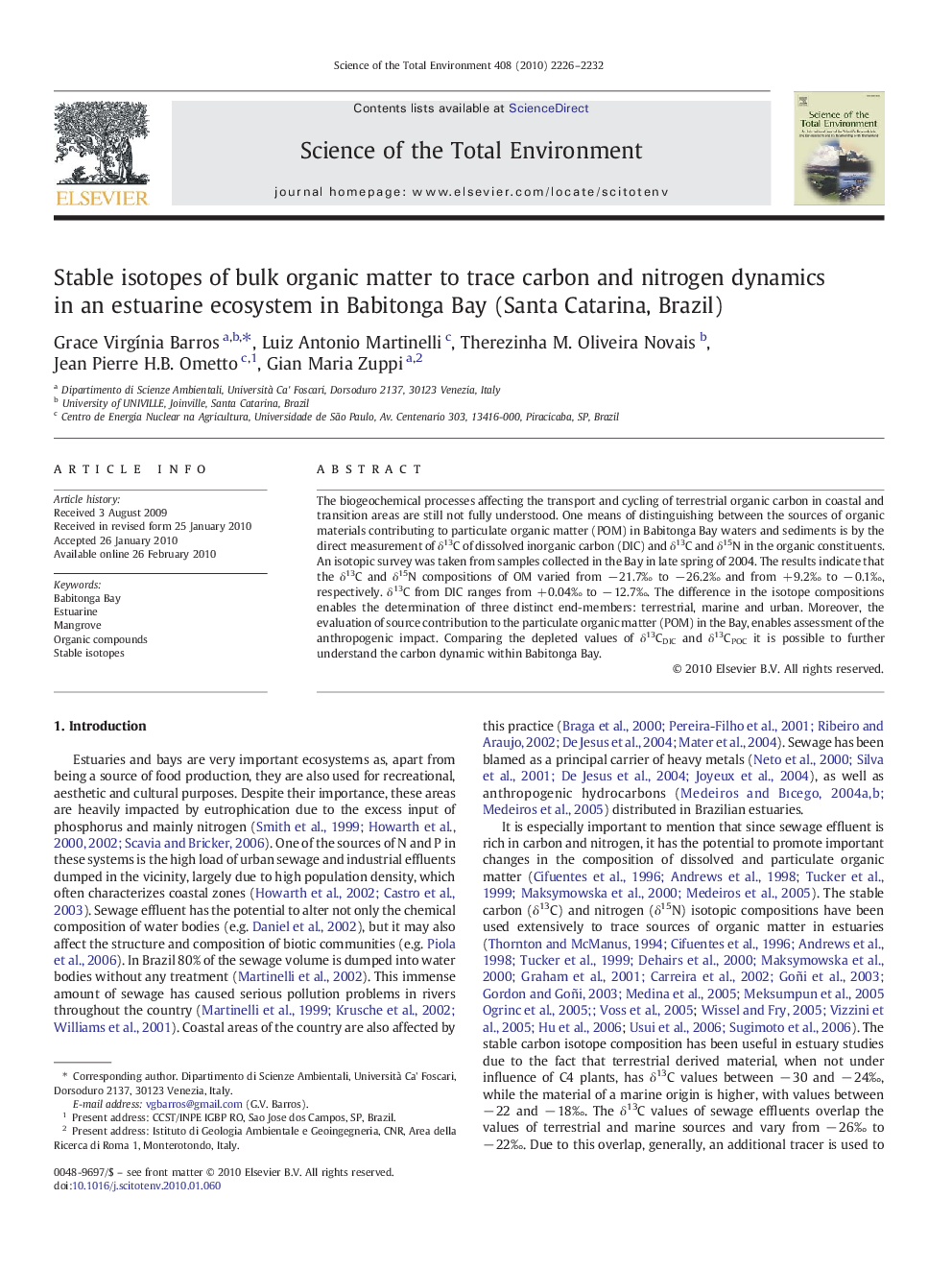| Article ID | Journal | Published Year | Pages | File Type |
|---|---|---|---|---|
| 4431684 | Science of The Total Environment | 2010 | 7 Pages |
The biogeochemical processes affecting the transport and cycling of terrestrial organic carbon in coastal and transition areas are still not fully understood. One means of distinguishing between the sources of organic materials contributing to particulate organic matter (POM) in Babitonga Bay waters and sediments is by the direct measurement of δ13C of dissolved inorganic carbon (DIC) and δ13C and δ15N in the organic constituents. An isotopic survey was taken from samples collected in the Bay in late spring of 2004. The results indicate that the δ13C and δ15N compositions of OM varied from − 21.7‰ to − 26.2‰ and from + 9.2‰ to − 0.1‰, respectively. δ13C from DIC ranges from + 0.04‰ to − 12.7‰. The difference in the isotope compositions enables the determination of three distinct end-members: terrestrial, marine and urban. Moreover, the evaluation of source contribution to the particulate organic matter (POM) in the Bay, enables assessment of the anthropogenic impact. Comparing the depleted values of δ13CDIC and δ13CPOC it is possible to further understand the carbon dynamic within Babitonga Bay.
